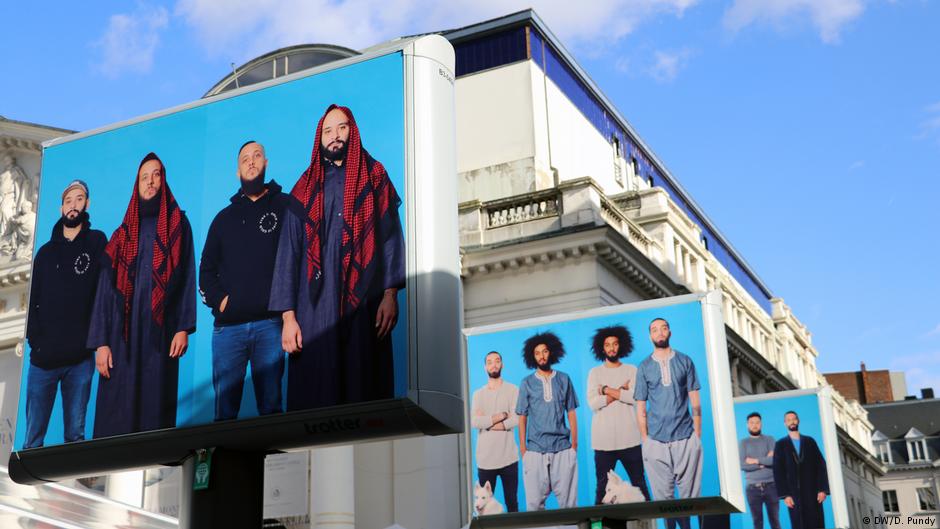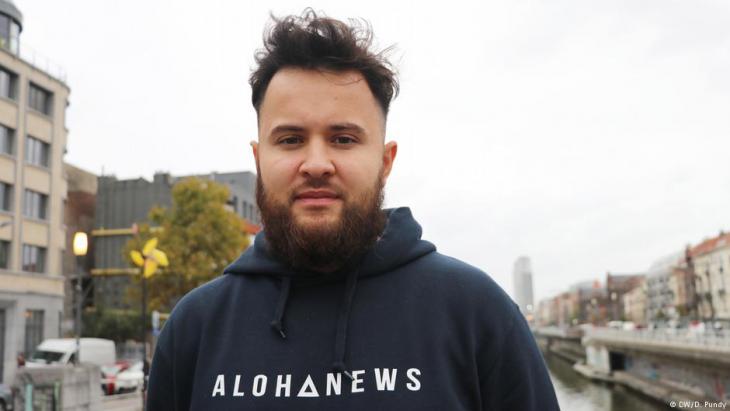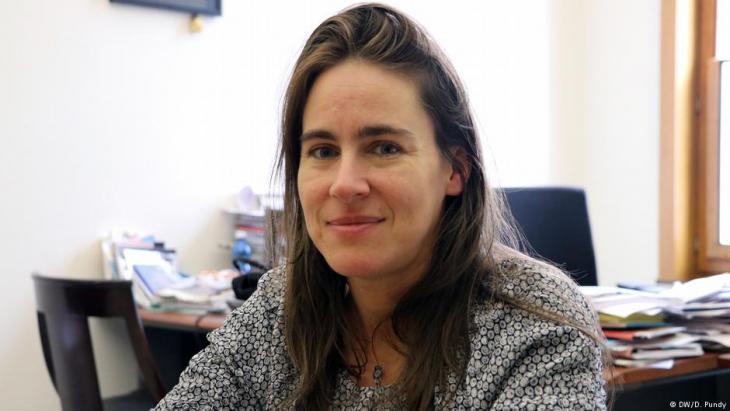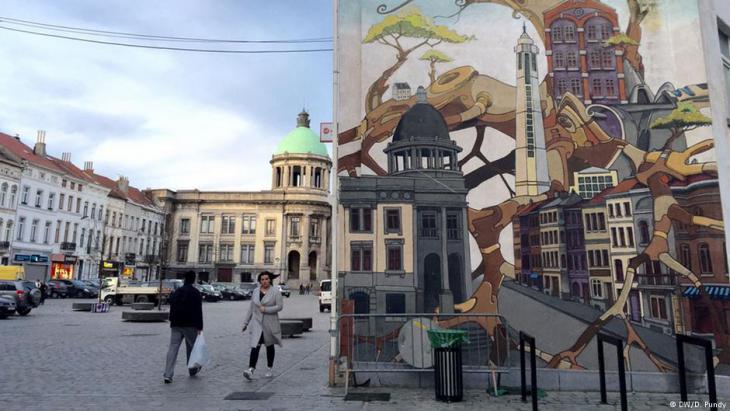Shaking the terrorist image

The photo shoot in the Brussels neighbourhood of Molenbeek is playful: painter Samuel Vanderveken is wearing a grey woollen sweater and jeans. His friend Nikita Imambayev stands to his right wearing a traditional chapan — an overcoat worn by Muslims in Central Asia. Both men have dark hair and beards and generally look rather similar. They pose, standing side by side, with their arms crossed. Then they change roles. Somewhat hesitantly, but nevertheless with a big smile, Vanderveken puts on the chapan and suddenly becomes a Muslim. The transformation seems perfect.
″I′m embarrassed to be a Muslim″
The men are taking part in an art project called "Hipster/Muslim: The New West," organised by the Get Me collective. The clothing swap is designed to tear down prejudices between Muslims and non-Muslims. They are young, easily fit into the "hipster" category and both work in the Molenbeek neighbourhood. Vanderveken is a Belgian-born atheist. Imambayev comes from Uzbekistan, runs a news portal and is a practising Muslim.
"I never say I'm a Muslim when I introduce myself to people," says the journalist. "I am embarrassed about it. I am afraid of putting other people in an unpleasant situation. And then I get embarrassed about getting embarrassed," says the 28-year-old. He is participating in the project to help break down preconceptions. He says he wants to show that a person can have more than one identity and that being a "Muslim" is just one of many such identities.

Project ideas like "Hipster/Muslim" first land on Sarah Turine's desk as Molenbeek's youth and integration representative. The community is doing everything it can to shake the "terrorist hotbed" image it received after the 2015 Paris and 2016 Brussels attacks. Both attacks were planned by people who were either born in the neighbourhood or had lived here.
The difficulty of living together
Sarah Turine has difficulty articulating all that has happened in Molenbeek over the last two years but acknowledges: "The attacks were a real catalyst." She says that a number of groups were active in the neighbourhood prior to that, but individual groups and communities generally kept to themselves. Though reluctance to interact with others has lessened since then, she adds, "there still isn't a real sense of coming together as a community."
Despite rapprochement, things are far from relaxed. "We are at the start of our journey in the fight against radicalisation," she says. Projects more specifically aimed at the problem of radicalisation and going far beyond the art initiative of the clothing exchange, are needed if there is to be any hope of reaching youths who feel marginalised by society and are therefore susceptible to radical Islamist ideology. But Turine says she often doesn't have the budget to fund such programmes. The Belgian government's crackdown on the neighbourhood and the stigmatisation that accompanied it can still be felt: "Just because they haven't all blown themselves up, that doesn't mean they feel any more accepted than they did two years ago."

Michael Dantinne, chairman of the University of Liege's Centre for the Study of Terrorism and Radicalisation (CETR), says that religion is just one of the reasons that a person may become radicalised. He says that other factors, such as unemployment, failed integration measures and poor urban planning, contribute to radicalisation more than anything else.
"But those problems have been plaguing Belgium for 20, 25, maybe even 30 years," according to the political scientist. That makes it even harder to effectively fight the root causes of radicalisation. "The most important thing," says Dantinne, "is that we keep pushing toward a true mixture of social classes in Belgium." He says that class interaction is the most effective way to help trouble spots like Molenbeek and to fight against radicalisation.
A tough fight
The photos taken for the Molenbeek "Hipster/Muslim" project are on display in front of the opera house in the centre of Brussels. The choice of venue is conspicuous and designed to put Molenbeek in the spotlight. Several of the participants are encountering one another for the first time since the photos were taken. They joyfully greet one another and exchange hugs and kisses. They are all very pleased at the sight of their photos. In this small group, at least, the concept of breaking barriers and coming together seems to work.

"Do a lot of people from the neighbourhood come to your studio?" asks journalist Imambayev of Vanderveken. "Well, not really," admits the artist. "The people who run the studio keep trying, but it will take time," he says. Imambayev adds, "I hope that when young people start moving to Molenbeek it will do more than just drive up the rent." Both men are hopeful that different groups in the neighbourhood will find a way to come together.
Local politician Sarah Turine says that it is the federal government's responsibility to make sure local representatives have enough funding to actually bring about positive change. Political science professor Michael Dantinne also sees government responsibility in meeting the challenge. He says it will take at least five to 10 years before anyone can begin to tell whether the effort to stop radicalisation has been successful. Adding that strong will is needed to fight the root causes: "It will require policies that have to be sustained for a very long time and will be extremely expensive. But that is the only way out."
Doris Pundy
© Deutsche Welle 2017
